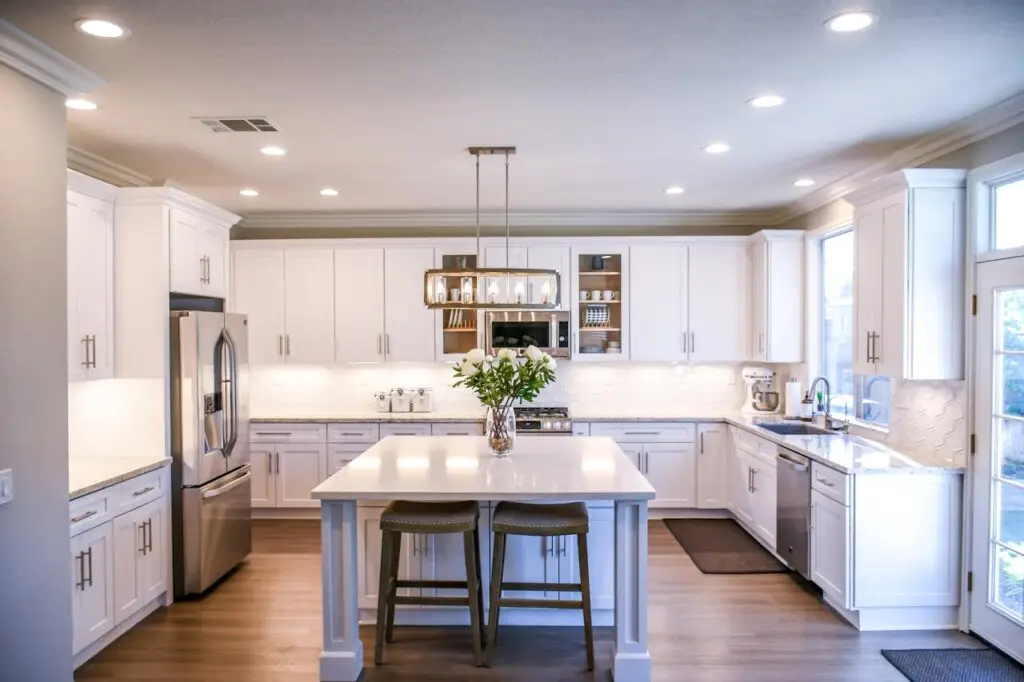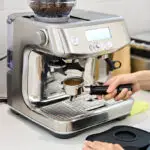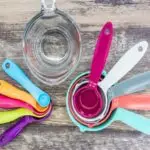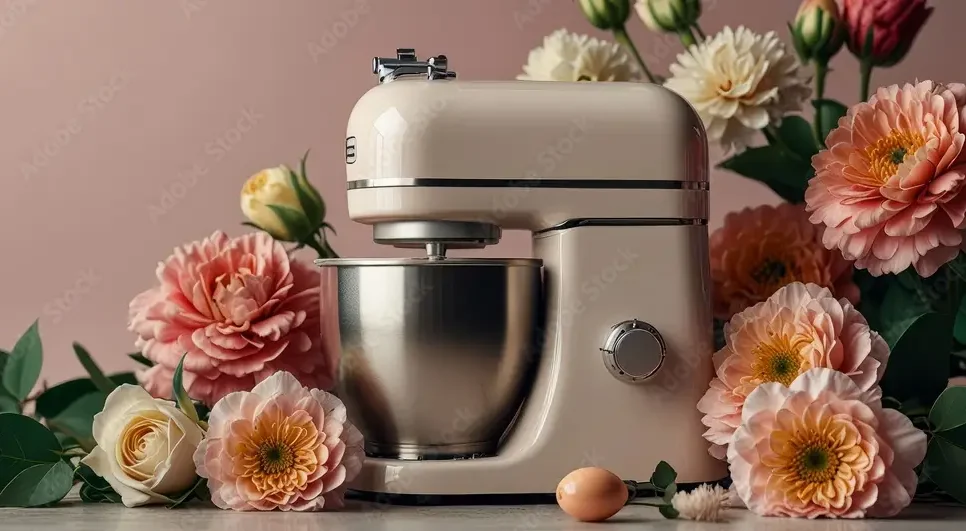Best Finish for Kitchen Cabinets
The best finish for kitchen cabinets combines durability, ease of application, and visual appeal. Various finishes cater to different needs and preferences, including oil-based, water-based, acrylic, lacquer, polyurethane, shellac, varnish, wax, paint, and stain finishes. Understanding each type’s characteristics and benefits will help you make an informed decision tailored to your kitchen’s specific requirements.
Introduction
Choosing the best finish for kitchen cabinets is more than just a matter of aesthetics; it directly impacts the durability, maintenance, and overall functionality of one of the most used spaces in your home. Cabinets endure daily wear and tear, exposure to heat, moisture, and constant handling. Therefore, selecting the right finish can extend their lifespan, enhance their appearance, and simplify cleaning and maintenance routines.
Oil-Based vs. Water-Based Finishes
Oil-based and water-based finishes are among the most popular choices for kitchen cabinets. Oil-based finishes are known for their durability and rich, glossy appearance. They penetrate deeply into the wood, providing a robust protective layer. However, they have longer drying times and emit strong odors due to high VOC (volatile organic compounds) content.
Water-based finishes, on the other hand, are favored for their quick drying times, low odor, and environmentally friendly properties. They provide a clear, non-yellowing finish that preserves the wood’s natural color. While they may not be as durable as oil-based finishes, advances in technology have significantly improved their resilience.
Acrylic Finishes
Acrylic finishes offer excellent clarity and resistance to yellowing over time, making them ideal for preserving the natural look of your cabinets. They are easy to apply and clean up with water, making them a user-friendly option for DIY enthusiasts. Additionally, acrylic finishes are flexible and less prone to cracking compared to some other finishes.
Lacquer Finishes
Lacquer finishes provide a smooth, high-gloss finish that enhances the beauty of kitchen cabinets. They dry quickly and are available in various sheens, from matte to high gloss. Lacquer finishes are durable and resistant to water and alcohol, making them suitable for kitchens. However, they require a well-ventilated area during application due to strong fumes.
Polyurethane Finishes
Polyurethane finishes are renowned for their toughness and resistance to scratches, stains, and moisture. Available in both oil-based and water-based formulas, polyurethane provides a hard, protective layer that extends the life of kitchen cabinets. It is particularly effective in high-traffic areas where cabinets are subject to frequent use and potential damage.
Shellac Finishes
Shellac is a traditional finish made from natural resins and alcohol. It provides a warm, amber tone that enhances the wood grain and adds a vintage charm to kitchen cabinets. Shellac finishes are easy to apply and can be used as a sealer under other finishes. However, they are less resistant to heat and moisture compared to modern finishes, making them better suited for decorative purposes.
Varnish Finishes
Varnish finishes offer a versatile solution for kitchen cabinets, enhancing the natural look of wood while providing a durable, protective coating. Available in different sheens, from satin to high gloss, varnish is resistant to heat, water, and chemicals. It can be applied over stains to seal and protect the wood, ensuring a long-lasting finish.
Conversion Varnish Finishes
Conversion varnish is a professional-grade finish known for its exceptional durability and resistance to wear and tear. Often used in commercial kitchens, it provides a tough, resilient surface that can withstand heavy use. Conversion varnish is more challenging to apply than other finishes, requiring professional expertise and proper ventilation due to its high VOC content.
Wax Finishes
Wax finishes offer a natural and organic option for kitchen cabinets. They provide a soft, low-sheen finish that highlights the wood’s natural beauty. Wax finishes are easy to apply and can be reapplied as needed to maintain the look and feel of the cabinets. However, they offer less protection against moisture and heat, making them suitable for areas with less exposure to these elements.
Paint Finishes
Paint finishes allow for a wide range of color options, enabling homeowners to personalize their kitchen cabinets to match their style and decor. High-quality paint finishes provide a smooth, durable surface that can be cleaned easily. They are available in various sheens, from matte to high gloss, and can be combined with primers and sealers for enhanced durability.
Stain Finishes
Stain finishes penetrate the wood, highlighting its natural grain and texture. They are available in a variety of shades, from light to dark, allowing for customization to suit different tastes. Stains provide a warm, rich appearance and can be topped with a protective clear coat to enhance durability.
Factors to Consider When Choosing
When selecting the best finish for kitchen cabinets, consider factors such as durability, maintenance, and aesthetics. The finish should withstand daily use, resist stains and scratches, and complement the overall design of your kitchen. Additionally, ease of application and environmental impact are important considerations for DIY projects and sustainable living.
Application Techniques
The method of application can significantly impact the quality of the finish. Common techniques include brushing, spraying, and rolling. Brushing is suitable for small projects and detailed work, while spraying provides a smooth, even coat ideal for larger surfaces. Rolling is efficient for flat, expansive areas but may require touch-ups to achieve a uniform finish.
Preparing Cabinets for Finishing
Proper preparation is crucial for achieving a flawless finish. Start by cleaning the cabinets thoroughly to remove grease and dirt. Sand the surfaces to create a smooth base and apply a primer if necessary to ensure better adhesion of the finish. Taking these steps will enhance the durability and appearance of the final result.
DIY vs. Professional Finishing
Deciding between DIY and professional finishing depends on your skill level, time availability, and the complexity of the project. DIY finishing can be cost-effective and rewarding, but it requires patience and attention to detail. Professional finishing offers expertise and high-quality results, particularly for challenging applications like conversion varnish.
Common Mistakes to Avoid
Avoiding common mistakes is key to achieving a professional-looking finish. Ensure the cabinets are properly prepared, use the right tools and techniques, and allow sufficient drying time between coats. Additionally, working in a well-ventilated area and following safety precautions will prevent issues such as uneven application, brush marks, and health hazards.
Maintaining Your Cabinet Finish
Regular maintenance will keep your cabinets looking their best for years to come. Clean the surfaces with mild soap and water, avoid abrasive cleaners, and promptly address spills and stains. Reapply protective coatings as needed to preserve the finish and protect the wood from damage.
Eco-Friendly Finishes
Eco-friendly finishes are becoming increasingly popular for their low environmental impact and health benefits. Water-based and natural oil finishes, as well as low-VOC options, provide a sustainable choice without compromising on quality. These finishes are safe for indoor use and contribute to a healthier home environment.
Popular Brands and Products
Several brands offer high-quality finishes for kitchen cabinets. Some of the top choices include Minwax, Varathane, General Finishes, and Rust-Oleum. These brands provide a range of options, from traditional varnishes to modern water-based finishes, catering to different needs and preferences.
Cost Considerations
Budgeting for your cabinet finishing project involves considering the cost of materials, tools, and potential professional services. While high-quality finishes may have a higher upfront cost, they offer long-term benefits in terms of durability and maintenance. DIY projects can be more affordable, but it’s essential to factor in the time and effort required.
Trends in Kitchen Cabinet Finishes
Current trends in kitchen cabinet finishes include matte and satin sheens, bold and dark colors, and the use of natural, eco-friendly products. Combining different finishes for a two-tone effect and incorporating textured surfaces are also popular choices, adding depth and character to kitchen designs.
Customer Reviews and Testimonials
Reading customer reviews and testimonials can provide valuable insights into the performance and satisfaction of different finishes. Real-life experiences highlight the pros and cons of each option, helping you make an informed decision based on actual use cases.
Best Finish for Modern Kitchens
Modern kitchens benefit from sleek and contemporary finishes such as high-gloss lacquer or matte acrylic. These finishes complement the clean lines and minimalist design often associated with modern kitchens, providing a stylish and functional solution.
Best Finish for Rustic Kitchens
Rustic kitchens often feature finishes that highlight the natural beauty of wood, such as stains, varnishes, and waxes. These finishes enhance the warm, cozy ambiance typical of rustic designs, creating a welcoming and homely atmosphere.
Best Finish for Traditional Kitchens
Traditional kitchens exude classic elegance and timeless appeal. Finishes like oil-based varnish or shellac add a rich, lustrous appearance that complements traditional cabinetry. These finishes provide durability and a touch of sophistication to traditional kitchen designs.
Enhancing Cabinet Hardware
Matching the finish of your cabinets with the hardware is essential for a cohesive look. Choose hardware with complementary finishes, such as brushed nickel, brass, or antique bronze, to enhance the overall aesthetic and functionality of your kitchen.
Re-finishing Old Cabinets
Re-finishing old cabinets is a cost-effective way to give your kitchen a fresh new look. Stripping the old finish, sanding the surfaces, and applying a new coat of paint, stain, or varnish can transform outdated cabinets into stylish and functional elements of your kitchen.
Combining Finishes
Combining different finishes can create unique and personalized kitchen designs. For example, using a matte finish on the upper cabinets and a glossy finish on the lower cabinets can add visual interest and contrast. Experimenting with different combinations allows for creative expression and customization.
Case Studies
Case studies of successful kitchen cabinet finishing projects provide practical examples and lessons learned. These real-world scenarios offer insights into the challenges and solutions encountered, helping you avoid common pitfalls and achieve the best results for your kitchen.
Conclusion
Choosing the best finish for kitchen cabinets involves careful consideration of various factors, including durability, aesthetics, application techniques, and maintenance. By understanding the different types of finishes available and their respective benefits, you can make an informed decision that enhances the beauty and functionality of your kitchen.
FAQs
What is the best finish for kitchen cabinets?
The best finish for kitchen cabinets depends on your specific needs and preferences. Popular options include oil-based finishes for durability, water-based finishes for low VOC content, and polyurethane finishes for high traffic areas.
How do I apply a finish to cabinets?
Application techniques vary depending on the type of finish. Common methods include brushing, spraying, and rolling. Proper preparation, such as cleaning and sanding the cabinets, is crucial for a smooth and durable finish.
Can I refinish my kitchen cabinets myself?
Yes, refinishing kitchen cabinets can be a DIY project. It requires patience, attention to detail, and the right tools and materials. Professional finishing may be preferable for complex or high-quality finishes.
How do I maintain my kitchen cabinet finish?
Maintain your cabinet finish by regularly cleaning with mild soap and water, avoiding abrasive cleaners, and promptly addressing spills and stains. Reapply protective coatings as needed to preserve the finish.
Are eco-friendly finishes suitable for kitchen cabinets?
Eco-friendly finishes, such as water-based and natural oil, are suitable for kitchen cabinets. They offer low VOC content and are safe for indoor use, contributing to a healthier home environment.
What are the latest trends in kitchen cabinet finishes?
Current trends include matte and satin sheens, bold and dark colors, and the use of natural, eco-friendly products. Two-tone finishes and textured surfaces are also popular for adding depth and character to kitchen designs.










